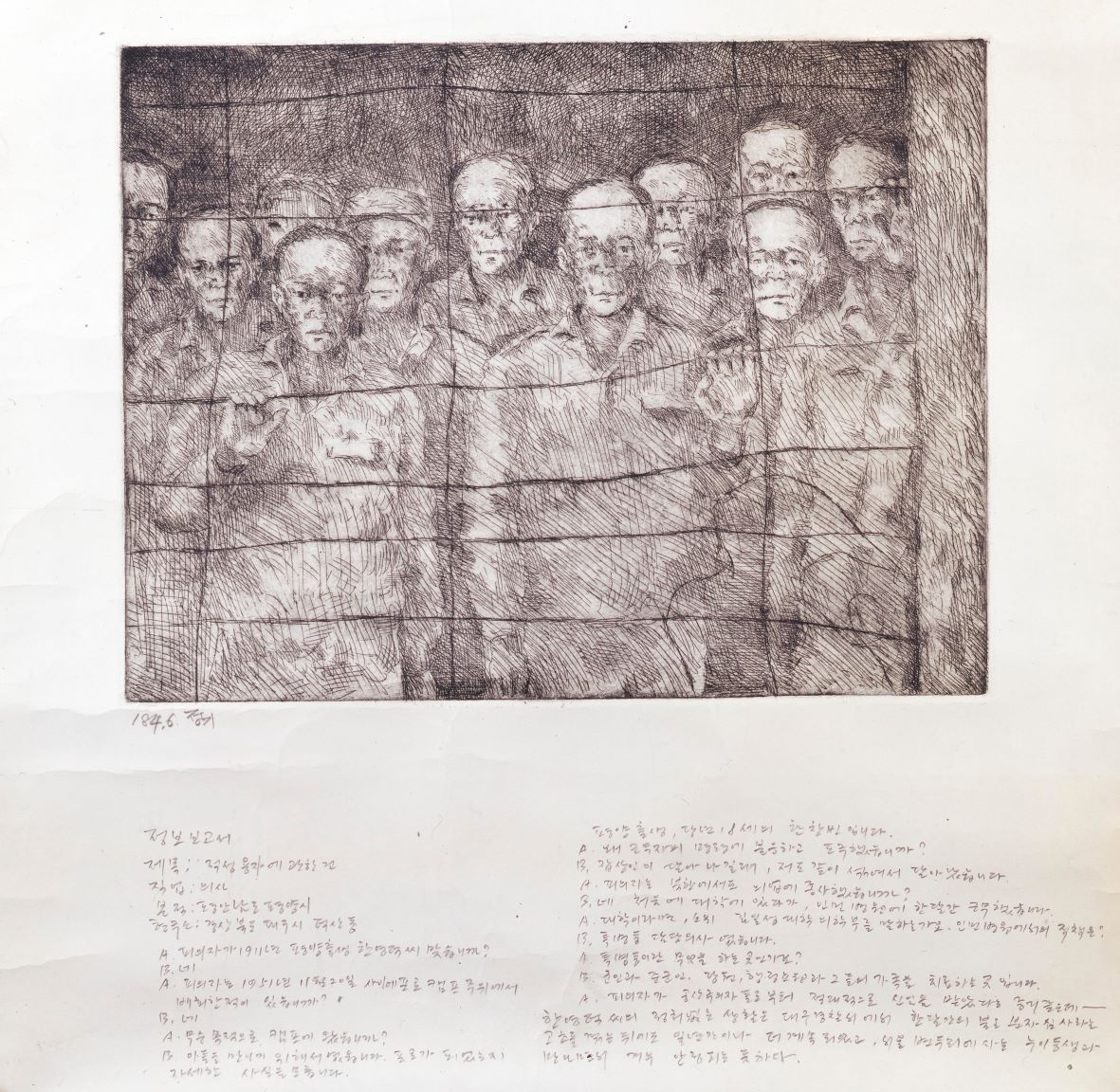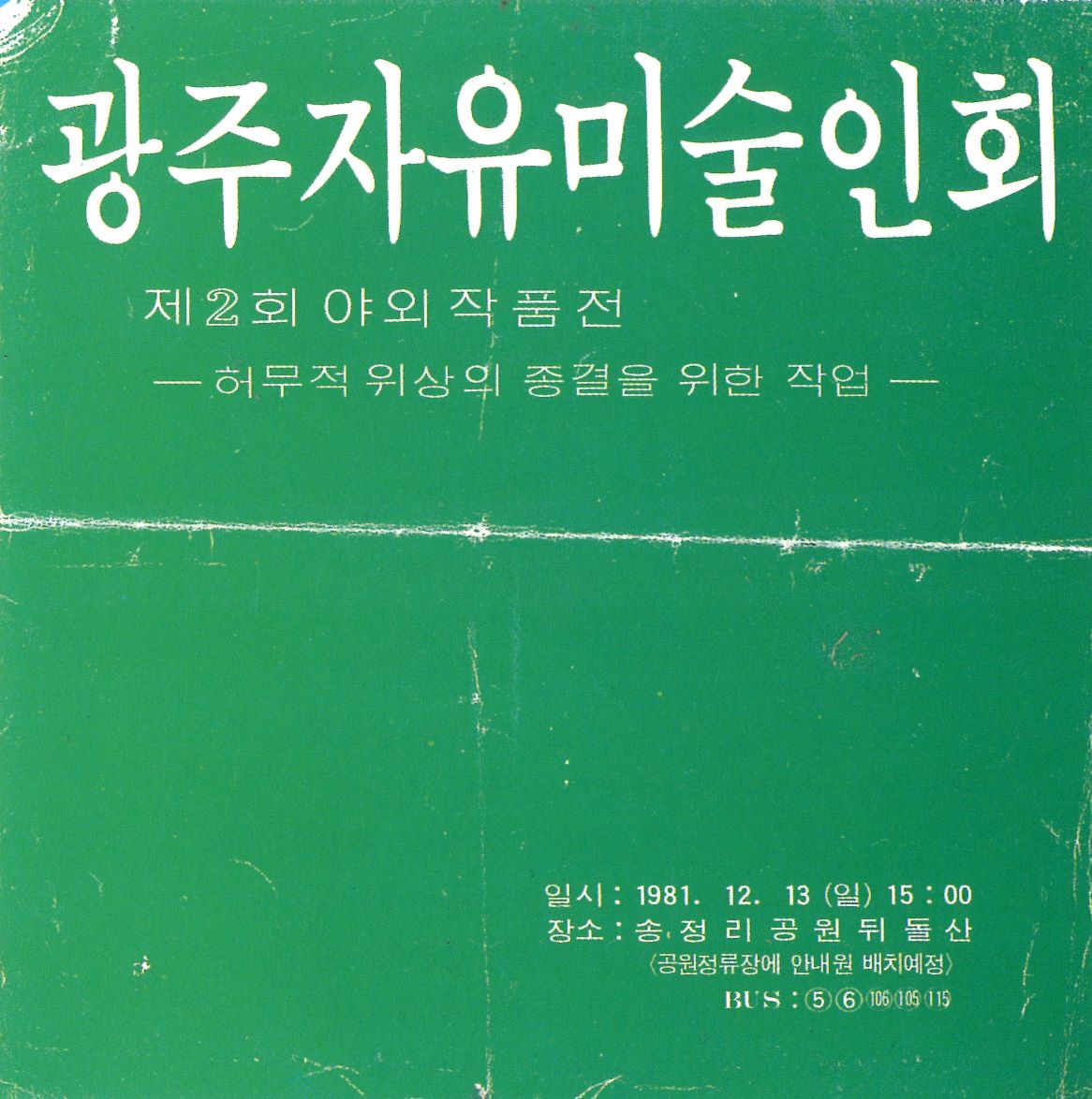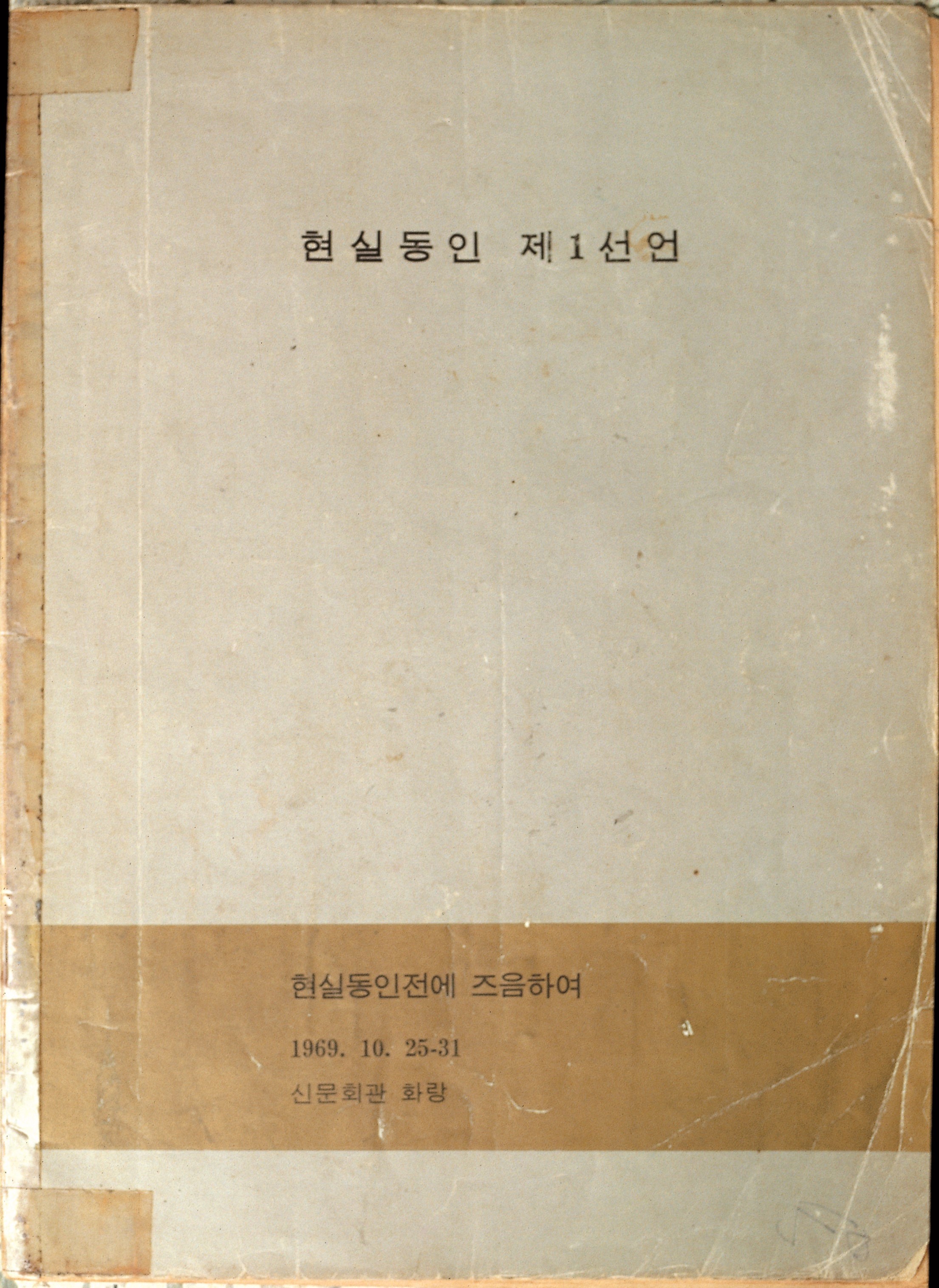
Min Jounki, The Han's Chronicle 1, 1984, Etching on paper, 53.5×53.5cm. MMCA collection
Realism
* Source: Multilingual Glossary of Korean Art by Korea Arts Management Service
Related
-

Minjung Art
An artistic movement that came to prominence alongside Korea’s democratization movement in the 1980s. Minjung artists often sought to critically portray the violent repression and corruption of the military dictatorship, to represent the experiences of laborers and farmers, and to achieve social change through art. In contrast to abstraction, which constituted the mainstream of 1970s art in Korea, Minjung Art is notable for the use of representational and figurative forms. One possible point of origin for Minjung Art is Oh Yoon’s work in the Reality Group (Hyeonsil dongin). The group was formed in 1969 by Kim Ji-ha, Oh Yoon, and Lim Se-taek. A variety of Minjung art groups were established, including the Reality and Utterance (Hyunsilgwa bareon) in 1979 by Kim Jungheun, Oh Yoon, Joo Jae-hwan, art critic Sung Wan-kyung, and Choi Min, the Gwangju Freedom Artist Association (Gwangju jayu misulin hyeopuihoe) in 1979 by Hong Sungdam and Choi Youl, the Imsulnyeon (The Year Imsul) in 1982, and the Dureong in 1983. These groups all commonly critiqued Western capitalism. In terms of form, Minjung artists adopted traditional and ethnic folk modes of expression using diverse media such as collage, printmaking, oil painting, and photography. Following the 15 Years of Korean Minjoong Arts: 1980-1994 Exhibition at the National Museum of Modern and Contemporary Art, Minjung Art became an accepted part of Korean art history. Overseas, Minjung Art has also become a recognized term that describes this genre and its unique focus on the political and social history of Korea.
-

Reality and Utterance
A group formed in 1979 by artists and critics that criticized the contradictory nature of industrial society and the conservatism of the art community. The group formed during preparations for an exhibition to mark the 20th anniversary of the 1960 April Revolution. The group emphasized a realistic attitude, namely that art must depict reality and reveal the underlying contradictions of society. The group borrowed from or copied pop culture images, and also used photography, prints, comics, reproductions, and collages. Such methods were considered a means to help critically address the overabundance of visual images in contemporary Korean society, the issues of urbanization, and the colonial nature of Korean culture.
-

Gwangju Freedom Artists Association
An art organization established in Gwangju and related to the early 1980s Minjung art movement. The Minjung art movement fought for art based on real life, in critique of the government-controlled art system and the art for art’s sake movement in the 1970s. The Gwangju Freedom Artists Association emphasized “art from the bottom”, art that can be created by public collaboration and appropriation, not by elites or art professionals. In September 1979, Hong Sungdam, Choi Youl, Kim Sanha, Lee Youngchae, Kim Yongchae, and Kang Daegyu prepared an exhibition. They later participated in the Gwangju Uprising in May 1980. They performed a shamanic ritual for cleansing a dead person's soul in the Nampyung Deudeulgang River in 1980, and also hosted outdoor exhibitions that commemorated the Gwangju Uprising in Songjeong-li, Gwangju in December 1981. The association opened the Citizens Art School in 1983 and engaged in a site-based art movement. The public print movement was expanded to Seoul, Seongnam, Incheon, Mokpo, and Iksan. In December 1985, its name was changed to the Visual Media Center. Their activities contributed to the foundation of the National Art Association (Minjok misul hyeopuihoe) in 1985.
Find More
-

Oh Yoon
Oh Yoon (1946-1986) is a sculptor, printmaker, and painter who participated in the Minjung art movement in the 1980s. He graduated from the Department of Sculpture at the College of Fine Arts, at Seoul National University. In 1969, while still a student at Seoul National University, he participated in the preparation of the inaugural exhibition of Reality Group [Hyeonsil dongin] with Kim Yoon-Soo, Kim Jiha, Oh Kyunghwan, and Lim Setaek, and began to explore the socially critical Minjung art movement. After graduating from university, he stayed in Gyeongju for two years to study traditional arts, such as stone Buddhist sculptures and terracotta figurines and set up a tile factory in Byeokje to start working with terracotta. The terracotta relief mural on the interior wall of the Guui-dong Branch of the Commercial Bank in Seoul and the terracotta relief mural on the exterior wall of the Dongdaemun Branch of the Commercial Bank are examples of his work from this period. In 1979, Oh Yoon participated as a founding member of Reality and Utterance [Hyeonsilgwa bareon] and continued to exhibit in the members’ exhibitions of Reality and Utterance, exhibiting socially engaged paintings, woodblock prints and banner paintings. His works evolved from his interest in the lives of laborers and peasants, and folk culture such as traditional performing arts and folktales. In the 1980s, he perfected his woodblock print style, focusing on portraits that exquisitely expressed condensed power and Korean sentiments of han (resentment) and sinmyeong (mirth). He created woodblock illustrations and covers for a number of publications, including Kim Jiha's Ojeok (Five thieves), and in 1986 he published a book of woodblock prints, Kal norae (song of sword). His representative works include the series Marketing, Dawn of Labor (1985), and the large banner painting, Great Desires for Unification (1985).
-

Dureong
Dureong was an art group founded in 1982 primarily comprised of Hongik University alumni that emphasized the ideology of Minjung Art. The group particularly rejected the use of Western methods and individualism that were adopted by the art group Reality and Utterance [Hyunsilgwa bareon]. Instead, they sought to create ethnically Korean, contemporary grass-roots art and develop more populist methods of expression. They aimed to create art that was relevant to the everyday lives of contemporary people rather than “nihilistic and commercialized sick paintings.” Their name originated from their periodicals Live Paintings and Live Art. The Dureong focused on ordinary people to foster art work based on everyday lives with the aim to educate people’s cultural sensibility. They also conducted research into traditional folk art, which they assumed as the origin of Korean Minjung art, and inherited the legacy of this work, in terms of trying to produce an art history relevant to ordinary people. They also emphasized collaborative projects as a means to democratize art production. The group engaged in joint projects for grassroots art, the creation of murals and prints, and ethnically grounded Korean art education until 1987.
-

Reality Group
An artists’ group concerned with the creation of a national aesthetic and realism. The group was formed by Oh Yoon, Lim Setaek, and Oh Kyunghwan, who were students at the Seoul National University College of Fine Arts in 1969. The inaugural exhibition of Reality Group was originally planned to be held at the Sinmunhoegwan Gallery from October 25 to 31, 1969, but the exhibition was canceled due to pressure from local authorities, after it was reported to the government by the university. However, knowledge about the existence of the group and its aims resulted from the inclusion of the 1st Declaration of the Reality Group (written by aesthetics major Kim Jiha and edited by Kim Yoon-Soo) in the catalogue for the inaugural exhibition. The stated goal of the Reality Group was to establish a new national art theory based on realist art that could usefully account for Korean tradition of visual culture. This influence of this approach was kept alive through Oh Yoon’s participation in the Reality and Utterance (Hyunsilgwa bareon) of the 1980s.






